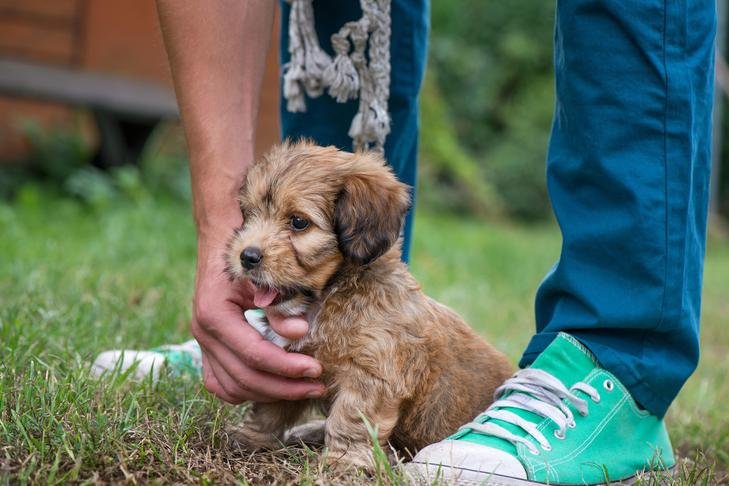As a new puppy owner, you may be surprised when your once fearless, adventurous little companion suddenly shows signs of fear. Whether it’s the vacuum cleaner, loud noises, or unfamiliar situations, fear periods are a natural and temporary part of a puppy’s development. These phases, though unsettling, are critical in shaping your dog’s emotional resilience and behavior. Understanding and managing fear periods during training can help your puppy grow into a confident, well-adjusted adult dog.
What Are Fear Periods?
Fear periods refer to phases in a puppy’s development when they become more sensitive to their environment. During these times, puppies are prone to heightened caution and may show fear toward objects, people, or situations they previously found neutral or enjoyable. There are generally two primary fear periods in a dog’s early life: one between 8-11 weeks of age, and another between 6-14 months.
These periods are crucial for socialization, as a puppy’s emotional responses are particularly impressionable. A single negative experience during a fear period can leave a lasting impact, affecting their temperament and behavior for life. That’s why it’s essential to be mindful of how you approach training during these times to avoid inadvertently reinforcing fear-based responses.
Understanding Changes in Your Puppy’s Behavior
When your puppy enters a fear period, it can be confusing. A once confident pup may now seem hesitant, anxious, or even frightened by everyday objects or situations. It’s important to remember that this shift is natural and doesn’t mean your puppy is broken or that you’ve done something wrong as an owner. Rather, it’s an opportunity to adjust your training to support their emotional development.

Lowering Training Expectations
During a fear period, it’s essential to lower your training expectations. Just because your puppy successfully navigated a task last week doesn’t mean they’re ready to handle the same challenge now. For example, a puppy that eagerly jumped on a wobble board might now be too afraid to even approach it. In these moments, it’s best to celebrate small victories. Reward your puppy for simply approaching the board or offering another simple command like “sit.” Keep training sessions short, light-hearted, and positive, with the goal of ending each session on a good note.
Adjusting Your Training Approach
Rather than pushing your puppy to confront their fears head-on, adjust the training criteria. It’s important to build confidence through manageable tasks and gentle exposure. For instance, if your puppy is fearful of a new object or sound, don’t force them to interact with it directly. Instead, reward calm behavior at a distance and gradually decrease the distance over time, always letting your puppy move at their own pace.
Training should always prioritize your puppy’s emotional state. Forcing them to overcome their fear before they are ready can backfire and exacerbate their anxiety. Like humans, puppies need time and patience to process fear, and they can’t simply be “talked out of it.”
Helping Your Puppy Build Confidence
Supporting your puppy through a fear period requires a balance of encouragement and patience. It can be tempting to push your dog to face their fears, but this approach is rarely effective. Imagine being told to confront something that terrifies you with little understanding or support—this is how your puppy feels when forced into uncomfortable situations.
Instead of pushing your puppy, help them gain confidence gradually. For example, if your puppy is afraid of a vacuum cleaner, start by rewarding calm behavior from a safe distance while the vacuum is on. Over time, you can gradually close the gap, ensuring that each step forward is rewarded with treats and praise.
By adjusting your approach to match your puppy’s emotional needs, you foster a sense of safety and trust, which helps them work through their fears. It’s important to keep in mind that a fear period is temporary, and by handling it with care, you’ll help your puppy emerge from it with greater confidence.

Choosing the Right Training Environments
When your puppy is in a fear period, the training environment becomes more important than ever. A once-busy pet store might now feel overwhelming to your puppy, and an overcrowded training class could be a source of stress. It’s important to tailor your training locations to your puppy’s emotional state, avoiding situations that could overwhelm them.
Opt for quieter, more familiar environments when possible. A calm backyard or a peaceful park may be ideal spots for training during a fear period. However, if you find that an environment is too stimulating or your puppy becomes visibly stressed, don’t hesitate to cut the session short or relocate. The goal is to ensure your puppy feels comfortable and supported.
The Role of Positive Reinforcement
Positive reinforcement is the cornerstone of effective puppy training, especially during fear periods. Using treats, praise, and rewards to encourage desirable behavior helps your puppy associate positive experiences with potentially frightening situations. However, it’s crucial not to use rewards in a way that pressures your puppy into confronting their fear before they are ready.
Rather than luring your puppy closer to a feared object with treats, reward them for showing curiosity or calmness at a distance. This approach builds a positive association without pushing them past their emotional threshold, helping your puppy feel more comfortable in their own time.
When to Seek Professional Help
Most fear periods last for a few weeks, and your puppy will likely outgrow them with time and patience. However, if your puppy’s fear persists beyond the usual duration or becomes more intense, it could indicate an underlying anxiety issue. In such cases, it’s beneficial to consult a professional dog trainer with experience in fear-based behavior. A trainer can offer guidance and techniques to help your puppy overcome persistent fear responses.
Additionally, if you notice that your puppy’s fears are severely affecting their daily life, it may be helpful to consult with a veterinarian to rule out any health concerns that could be contributing to their anxiety.
Final Thoughts
Fear periods are a natural and crucial part of your puppy’s development. While they can be challenging, they offer an opportunity to strengthen the bond between you and your puppy by responding to their needs with patience and understanding. By adjusting your training approach, choosing appropriate environments, and fostering confidence, you can help your puppy navigate these phases and emerge as a well-adjusted, confident adult dog. Always remember: fear is temporary, but the support and love you provide during this time will last a lifetime.


